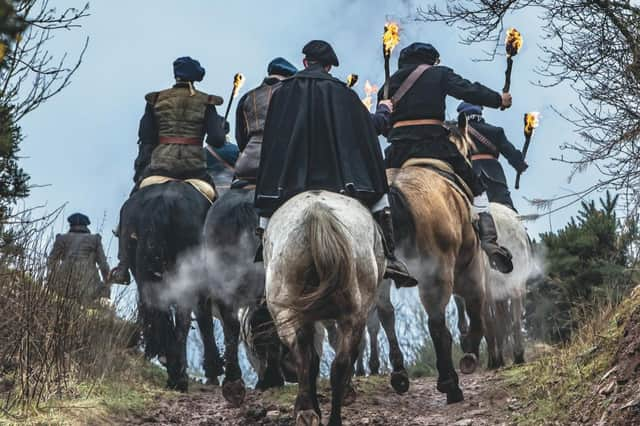Plans in place to build historic path networks


First, a South of Scotland Enterprise (SOSE)-funded feasibility study has made a strong case for developing the heritage project that will bring to life the story of the Twelve Towers of Rule – a day of devastation in the Rule Valley during Henry VIII’s ‘Rough Wooing’ campaign.
As well as uncovering the mysteries surrounding the towers in the Rule and Teviot valleys that were burned to the ground, the Twelve Towers team aims to tell the tales of how the families survived – some of their descendants still live in the valleys today – and follow some of the famous local clans who now have members all over the world.
Advertisement
Hide AdAdvertisement
Hide AdThe roject already involves a number of heritage agencies, volunteers and local groups, and is being coordinated by the Campaign for a Scottish Borders National Park (SBNP).
SOSE provided £18,840 towards the Twelve Towers of Rule feasibility study.
SOSE chair, Professor Russel Griggs OBE, said: “The feasibility study explored the potential benefits of creating a visitor experience to re-tell a fascinating Borders story to wider audiences.
‘Any individual, community group or businesses looking to discuss an idea they may have which could help bring more visitors to the South of Scotland is encouraged to get in touch with us.’
Advertisement
Hide AdAdvertisement
Hide AdThe report’s authors recommend that the project team focuses on securing a long-term partnership with a lead organisation, such as Archaeology Scotland, to help attract core funding of around £280,000 to develop the paths network and visitor destinations at several of the tower sites, and fund a dedicated project officer to steer the project to completion by autumn 2024.
Ongoing consultation with local residents and input from a series of public meetings will determine the best and most accessible locations for visitors; existing and new cycle routes to be upgraded, extended or installed; landowners’ agreements signed; archaeological research and project timetable drawn up; interpretation and wayfinding tools developed; and an events and activities programme devised that includes school visits and skills development workshops.
As SBNP team leader Jane Bower says: ‘Teviotdale is one of the Borders’ hidden gems and lies at the heart of the proposed Scottish Borders National Park. The Rule Valley’s story is just one chapter of this area’s unique history, and we set out to showcase what could be achieved by making much more of it. The project demonstrates how a Scottish Borders National Park Authority team could coordinate diverse individuals and groups and knit together the many strands of this area’s extraordinarily rich - and largely unknown - cultural and natural heritage to benefit as many people as possible.’
Another exciting proposal for a community footpaths network around Teviotdale’s iconic hill, Ruberslaw, is also viable, says a separate just-issued feasibility study completed by the Southern Uplands Partnership (SUP) and supported by the South of Scotland Economic Partnership (SOSEP). Existing unmade, informal paths already lead up to the virtually unspoilt 360-degree views from the summit from Denholm, Bonchester Bridge, Bedrule and Cavers. Some of these link to Hawick and Jedburgh along the Borders Abbeys Way. Upgrading and extending these existing routes would help the growing numbers of walkers climbing the hill with signage, gates and stiles, parking, and path improvements. New visitors staying in local campsites, self-catering and B&Bs would find well-signposted interconnecting walks, making the area a more attractive destination.
Advertisement
Hide AdAdvertisement
Hide AdSays Alan Bailey of Ruberslaw Wild Wood Camping (RWWC): ‘Most of the businesses, landowners and community groups in the immediate area are broadly supportive of the proposal and see the wider community benefit. A key benefit for farmers around Ruberslaw would be that walkers would be managed and guided by formal pathways, improving safety and reducing difficulties in stock management caused by walkers. Some farmers already actively encourage walkers and have, or are planning, tourism diversification, and many are keen to promote responsible access that a defined paths network could encourage.
‘The path network would be managed and maintained by a community body, such as an existing local development trust, or a new dedicated organisation, and volunteer help will be essential. SUP explains there is a good case for investment in rural path networks because of the economic benefits they can generate in rural communities. With promotion of walking (and cycling and riding) a key component of local development strategies, the post-Pandemic recovery will provide many opportunities for existing businesses and entrepreneurs.
‘Together the Twelve Towers project and the Ruberslaw footpaths network present a very positive vision for tourism in and around Rulewater.’